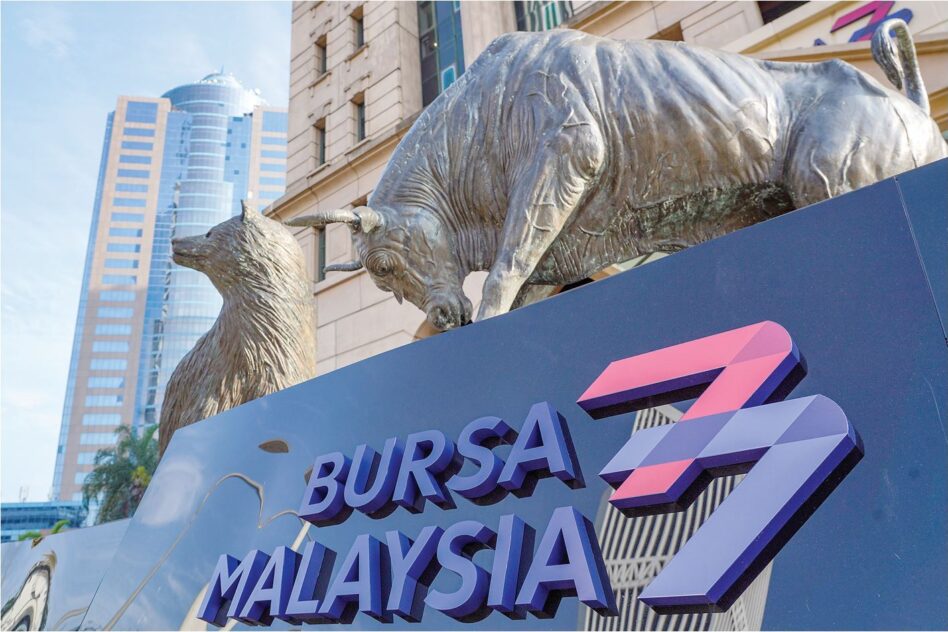MALAYSIA must be prepared for a tough yet “new normal” path post the Covid-19 pandemic. The consensus is now building around a long U-shaped economic recovery for 2020-2021.
While an immediate focus is on softening the magnitude of economic implosion, we should not overlook policy recalibration and responses to achieve medium and longer-term growth sustainability even in a more challenging and disruptive environment ahead.
We must think and plan ahead as the crisis opens up the lenscope and offers an opportunity to act across four stages of policy diagnostic, screening and formulation process: Rebuild, Resilience, Reimagine and Reform.
The government has started preparing to draw up an exit strategy post the Movement Control Order (MCO) as well as to formulate short-, medium- and long-term economic plans to revitalise the economy.
Businesses must be backed up and running in a new dimension, which is characterised by the anticipated changes in behavioral protocols in consumers and businesses, re-orientation of global supply chains, more digitalisation, automation, data solutions, e-commerce and advancing towards e-payment etc. Our workforce needs to be more skilful and productive, technology-savvy, agile and mobile as well as possess innovation and creativity capacity.
Have we got our priorities right? Faced with a limited fiscal space and budget resources, all stakeholders have to make some sacrifices and compromises in terms of direct cash handouts, financial assistance and fiscal support.
During the MCO period, households, businesses, employees and employers have to endure inconveniences, economic and financial disruptions though the degree of impact varies. The estimated economic output loss per day during the MCO is RM2.5 bil. The unregistered 2.8 million self-employed persons (18.6% of total workforce) is another source of vulnerability to the economic downturn.
The first priority is to provide wage subsidy to save workers though in reality, thousands of employees have been laid off with an unprecedented speed in recent months.
Second, channel direct cash handouts to B40 and M40 income households and the vulnerable groups.
Third, to safeguard SMEs against closures and bankruptcies. SMEs accounted for 98.5% of total business establishments; 38.2% of total GDP; 66.2% of total employment (10 million persons) and 17.3% of total exports.
Fourth, Bank Negara Malaysia has injected loads of liquidity, offered preferential interest rate soft loan facilities to businesses and enhanced the banks’ capital buffer to sustenance financial intermediation.
The reconstruction phase is a time to stabilise the economy, enable households and businesses to recover sustainably as the health crisis subsides. It is reasonable to expect aggregate demand will mend gradually after the pandemic is over, accompanied by the restoration of consumer and business sentiments and confidence.
It is certain that many households would have depleted their savings or incurred large debt, and would rebuild savings and hence, consume less. Similarly, many firms would have shut down their business; suffered cash flow problems and also need to rebuild their balance sheet before committing to invest.
The key medium- to long-term challenges are deterioration of market demand, supply chain disruptions and rising operating costs. In the next three to six months, all industries will encounter obstacles restarting a smooth collaboration with suppliers, distributors and customers. Cash-flow problems and supply chain disruptions may slow efforts to get plants up and running.
The government’s action plans will be critical to ensure a quick economic revival and business sustainability, starting with the tabling of the 2021 Budget, This will be followed by the formulation of medium- and long-term strategic policies and initiatives to have long-lasting effects on the economic and business ecosystem.
Malaysia’s Economic Recovery Plan (ERP) must rest on five key pillars:
1. Fiscal and Growth Stabilisation Pact;
2. Unlocking New Sources of Growth;
3. Reinforce Competitiveness and Productivity Nexus;
4. Smart, Eco-Green and Digital Technology-Driven Investment; and
5. Upskilling the Workforce and Education for the Future.
The Fiscal and Growth Stabilisation Pact is about swiftly stimulating domestic demand and boosting consumer demand through a major injection of purchasing power into the economy. Actions can be taken to stem the loss of jobs and income as well as help people return rapidly to the employment market. Businesses must be backed up and running through easing rules and regulations as well as timely tax breaks and incentives.
The government should set out a comprehensive programme to direct action to “smart and digital technology-driven” investment. Smart investment means investing in the right skills for tomorrow’s needs; investing in energy efficiency and renewable energy to create jobs and save energy; investing in clean technologies to boost sectors like agriculture, construction and electric and autonomous automobiles in the low-carbon markets of the future; and investing in infrastructure, digitalisation and inter-connection to promote efficiency and innovation.
The ERP must critically and boldly (a) Address structural weaknesses and vulnerabilities in areas of rebuilding our fiscal firepower; (b) Scale up innovation and new technology actions; (c) Build businesses’ digital capabilities and increase productivity growth; (d) Boost SMEs’ export capacity and develop cluster-based global value chains; (e) Invest and build the right skills for today’s and tomorrow’s needs.
Balancing economic growth with fiscal discipline remains the policy priority. This entails the rolling out of structural reforms to prepare the economy to face new technological challenges and digitalisation-induced disruptions on workforce, businesses and trade. The Covid-19 pandemic may induce changes in the behavioral protocols of consumers and businesses over the medium-term.
Priority areas for structural reforms include: fiscal and debt sustainability reforms, raising investment potential and productivity level; strengthening the provision of social assistance for low- and middle-income households; strengthening export capacity, encouraging high value-add and downstream resource-based industries.
Our choices on fiscal reforms will affect our future fiscal capacity to support growth and investment opportunities without creating risks but also opportunities. For instance, the tax reform component is to broaden the tax base through the reintroduction of the Goods and Service Tax (GST), plugging the shadow economy, creating new tax rates for carbon, and different incentives to reduce carbon emissions.
The plunge in global oil prices offers an opportunity to revisit the subsidies currently in place and redirect these resources to more efficient ways to targeted assistance and subsidies based on needs and income.
A wide range of investments can boost shorter-term job creation and incomes and generate long-term sustainability and growth benefits. These include production of renewable energy; agricultural and smart farming; green and sustainable products; eco-green technologies in manufacturing, construction, automobiles and transportation; climate change; disease control and prevention; preservation or restoration of natural areas that provide ecosystem services and resilience to floods and drought; the remediation of polluted rivers; investments in water treatment and sanitation; or sustainable transport and metro system as well as smart homes.
Malaysia needs quality private investment to be the “lead driver” of the country’s growth engine as the government consolidates its finances.
Sliding private investment and Domestic Direct Investment (DDI) need an immediate policy intervention: (a) Design a Strategic National Investment Plan to reinvigorate private investment;(b) A one-stop centre to facilitate and “hand hold” investors; (c) Maintain a competitive tax structure and cost of doing business, transparent and liberal investment policies/guidelines; and (d) A rethinking of investment incentives framework. It should be time-bound and tied to innovation, productivity, transfer of technology, product complexity and quality of employment.
We have to be strategic in crafting appropriate, pragmatic and implementable policy responses to achieve both short-, medium- and long-term outcomes. Planning and engagement with all stakeholders must start immediately.
If we get it right and execute it right (the authorities seemingly have weak execution), the policy responses can build a greener, safer and more prosperous future. — April 22, 2020
Lee Heng Guie is the executive director of Socio-Economic Research Centre (SERC), an independent research organisation








